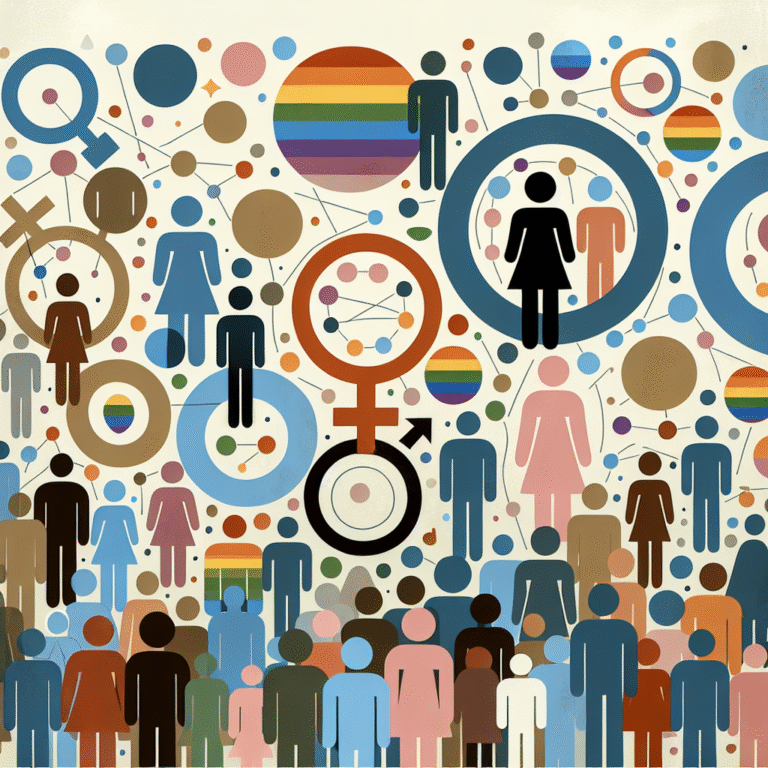
Introduction
In a world where talent should shine irrespective of gender, the harsh reality of gender discrimination in the workplace continues to pervade many industries. It not only stifles individual potential but also hampers organizational growth by limiting the diversity of thought and creativity. Breaking the Barrier: Confronting Gender Discrimination in the Workplace is not merely a call to action; it’s an essential movement advocating for equality and justice in professional environments. As conversations around gender equality gain momentum, understanding how to confront and dismantle these barriers becomes imperative for fostering a more inclusive atmosphere.
Understanding Gender Discrimination
Before we delve deeper into solutions and strategies for breaking the barrier, it’s critical to recognize what gender discrimination truly encompasses. Gender discrimination occurs when individuals face prejudice based solely on their gender. This can manifest in various forms — from hiring biases and pay inequities to invisible glass ceilings limiting career advancement. Subtle acts of discrimination, such as excluding women from big projects or assuming men are more suited for leadership, create an ingrained culture that can perpetuate inequity.
Statistics: The Current Landscape
To ground our understanding, consider these sobering statistics about gender discrimination:
| Statistic | Find |
|---|---|
| Women make up 47% of the workforce but only hold 26% of executive roles. | [Catalyst, 2020] |
| Gender pay gap stands at approx. 16%, meaning women earn 84 cents for every dollar earned by a man. | [Pew Research Center, 2021] |
| Over 50% of women reported experiencing gender discrimination in the workplace. | [Harris Poll, 2020] |
These statistics clearly outline the staggering disbalance that needs addressing through effective strategies aimed at breaking the barrier.
The Importance of Confronting Gender Discrimination
Addressing gender disparities is not just the right thing to do; it’s essential for businesses aiming to thrive in a competitive landscape. Gender-diverse workplaces lead to better decision-making, enhanced innovation, and improved financial performance. Companies that prioritize gender equality benefit from elevated employee morale, reduced turnover, and heightened productivity.
Government Interventions and Policies
National and local legislation plays a crucial role in shaping workplace dynamics regarding gender equality. The Equal Pay Act, Title IX, and various anti-discrimination laws are instrumental in ensuring that organizations uphold gender parity. However, these laws alone may not be enough. Businesses must proactively cultivate cultures of inclusivity through training, mentorship programs, and equitable human resources processes.
Case Study: Salesforce
Salesforce, a leader in customer relationship management (CRM), took significant steps to address gender discrimination in its workforce. They conducted regular audits of employee salaries and implemented immediate adjustments where disparities were found. As a result, not only did they close their gender pay gap, but Salesforce also saw an increase in employee engagement and retention. This case illustrates the effectiveness of tangible action in breaking the barrier against discrimination.
Educational Initiatives
Education plays a pivotal role in confronting gender discrimination. By infusing comprehensive gender studies into organizational practices, companies can sensitize employees about biases consciously and unconsciously held. Workshops and seminars led by diversity and inclusion experts foster understanding and empathy, creating an environment where women can thrive.
Case Study: PwC
PwC has created a program called "She’s Next," supporting women entrepreneurs with mentorship, resources, and networking opportunities. This initiative not only empowers women but actively works to dismantle the barriers they face in the professional world through education, which offers robust insights into fostering equitable contributions from all genders.
Addressing Gender Bias in Recruitment and Retention
Despite good intentions, unconscious bias often finds its way into recruitment processes. From job descriptions that favor masculine language to interview processes that overlook qualified women, bias manifests at multiple stages.
Strategies to Mitigate Recruitment Bias
-
Blind Recruitment: Remove names and identifying information from resumes that may indicate gender, age, or ethnicity to focus solely on qualifications.
-
Structured Interviews: Use standardized questions for all candidates. This minimizes the potential for biases that may arise during informal discussions.
- Diverse Hiring Panels: Create panels with diverse members to reduce groupthink and increase the chances of hiring the best candidates from varied backgrounds.
Case Study: Unilever
Unilever implemented a blind recruitment system that resulted in a more diverse candidate pool and significantly reduced bias. Their commitment to equitable hiring demonstrates a forward-thinking approach to breaking the barrier in recruitment practices.
Building an Inclusive Workplace Culture
Organizations must foster an environment where all employees feel valued, respected, and empowered to contribute. This requires committed leadership and sustained efforts at developing an inclusive culture.
Strategies for Inclusion
-
Employee Resource Groups (ERGs): Establish groups that provide support networks for underrepresented employees. These can foster community and amplify voices that might otherwise remain unheard.
-
Flexible Work Arrangements: Create policies that recognize and accommodate the diverse needs of employees, like parental leave and work-from-home options.
- Regular Feedback: Encourage open dialogue and seek regular feedback from employees about their experiences regarding inclusivity within the workspace.
Case Study: Google
Google has made significant investments in creating a culture of inclusion. Their initiatives, including ERGs and extensive training on unconscious bias, have led to positive shifts in workplace dynamics, showcasing how organizations can effectively break the barrier through cultural commitment.
Measuring Progress: The Importance of Data
Tracking advancements in gender equality within organizations is vital. By implementing key performance indicators (KPIs), companies can assess the effectiveness of their initiatives and refine strategies as necessary.
Key Metrics to Track
- Gender Ratio of New Hires: Monitor changes in the gender dynamics of new employees to ensure growth in representation.
- Employee Satisfaction Surveys: Measure employee sentiments regarding gender equity and inclusiveness.
- Promotion Rates: Analyze data concerning the progression of women within the organization to identify potential biases in career development opportunities.
Case Study: LinkedIn
LinkedIn has taken an innovative approach to measure its progress on gender diversity through annual transparency reports. By openly sharing related data, they hold themselves accountable, creating a roadmap for continual improvement, a crucial step in breaking the barrier against gender discrimination.
Conclusion
The fight against gender discrimination in the workplace is ongoing. However, by embracing the principles outlined in this article, organizations can begin the journey towards equality, inclusivity, and ultimately success. Breaking the Barrier: Confronting Gender Discrimination in the Workplace requires collective effort — from innovative policies to cultural shifts. It is an essential endeavor not just for the benefit of women but for society and businesses at large. Let’s champion this movement and inspire others to follow suit, ensuring that the workplace becomes a realm of equal opportunity.
FAQs
-
What is gender discrimination in the workplace?
- Gender discrimination refers to unjust or prejudicial treatment based on an individual’s gender. It manifests in hiring, pay, promotions, and overall workplace culture.
-
How can I identify gender discrimination in my workplace?
- Look for patterns such as unequal pay, lack of representation in leadership roles, biased recruitment practices, and feedback from employees regarding their experiences.
-
What laws protect against gender discrimination?
- Various laws, including the Equal Pay Act and Title VII of the Civil Rights Act, are designed to protect individuals from gender discrimination and ensure fair treatment in the workplace.
-
Why is diversity important in the workplace?
- Diverse workplaces foster innovation, improve problem-solving, enhance employee engagement, and contribute to better business performance.
- How can I support gender equality in my organization?
- Advocate for inclusive policies, participate in training, mentor underrepresented employees, and contribute to open dialogue about diversity and inclusion.
By understanding and addressing gender discrimination, we not only break the barrier but pave the way for a more equitable and prosperous future for everyone.














